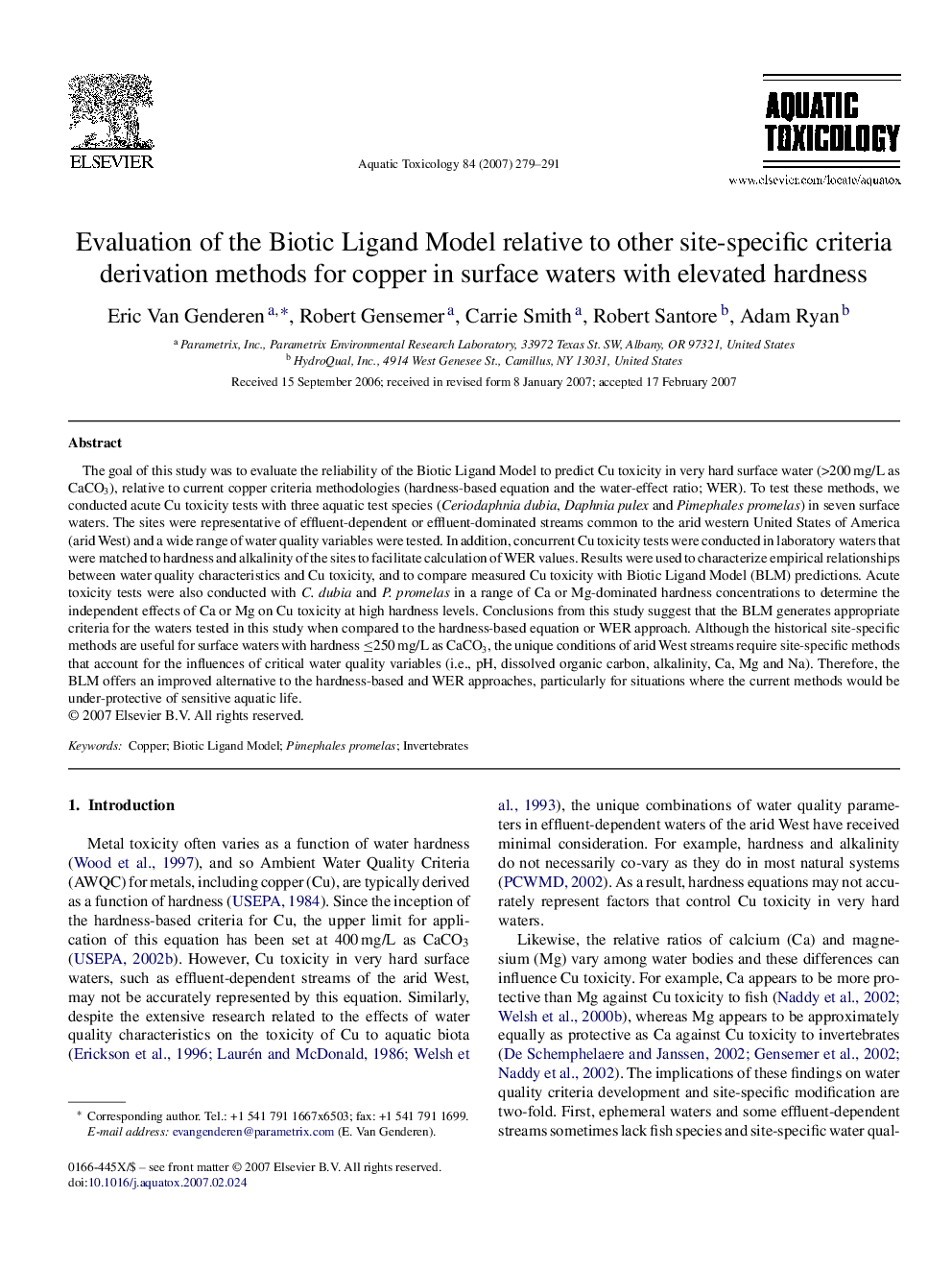| کد مقاله | کد نشریه | سال انتشار | مقاله انگلیسی | نسخه تمام متن |
|---|---|---|---|---|
| 4531049 | 1324748 | 2007 | 13 صفحه PDF | دانلود رایگان |

The goal of this study was to evaluate the reliability of the Biotic Ligand Model to predict Cu toxicity in very hard surface water (>200 mg/L as CaCO3), relative to current copper criteria methodologies (hardness-based equation and the water-effect ratio; WER). To test these methods, we conducted acute Cu toxicity tests with three aquatic test species (Ceriodaphnia dubia, Daphnia pulex and Pimephales promelas) in seven surface waters. The sites were representative of effluent-dependent or effluent-dominated streams common to the arid western United States of America (arid West) and a wide range of water quality variables were tested. In addition, concurrent Cu toxicity tests were conducted in laboratory waters that were matched to hardness and alkalinity of the sites to facilitate calculation of WER values. Results were used to characterize empirical relationships between water quality characteristics and Cu toxicity, and to compare measured Cu toxicity with Biotic Ligand Model (BLM) predictions. Acute toxicity tests were also conducted with C. dubia and P. promelas in a range of Ca or Mg-dominated hardness concentrations to determine the independent effects of Ca or Mg on Cu toxicity at high hardness levels. Conclusions from this study suggest that the BLM generates appropriate criteria for the waters tested in this study when compared to the hardness-based equation or WER approach. Although the historical site-specific methods are useful for surface waters with hardness ≤250 mg/L as CaCO3, the unique conditions of arid West streams require site-specific methods that account for the influences of critical water quality variables (i.e., pH, dissolved organic carbon, alkalinity, Ca, Mg and Na). Therefore, the BLM offers an improved alternative to the hardness-based and WER approaches, particularly for situations where the current methods would be under-protective of sensitive aquatic life.
Journal: Aquatic Toxicology - Volume 84, Issue 2, 30 August 2007, Pages 279–291